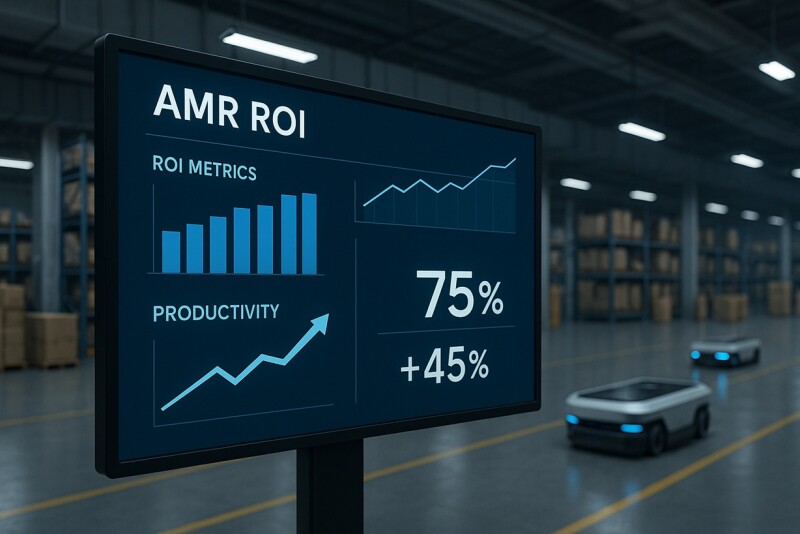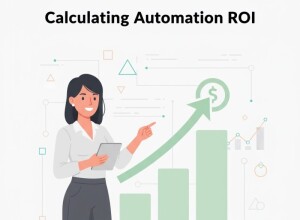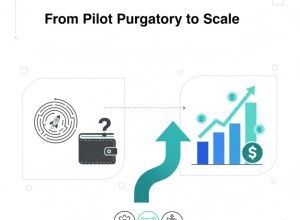Intralogistics Automation ROI: Calculating the Payback of AMRs
Automation projects often promise big savings, but proving the ROI of AMRs (Autonomous Mobile Robots) requires real data. In 2025, logistics managers are under pressure to justify investments not just with speed, but with measurable financial impact. Here’s how to calculate the payback period of intralogistics automation — and why AMRs often outperform traditional AGVs or manual handling systems.
Understanding the ROI Formula
The simplest form of ROI is:
ROI = (Annual Benefits - Annual Costs) / Initial Investment
But in automation, “benefits” go far beyond labor savings. They include uptime, space efficiency, safety improvements, and data-driven process optimization. When these are considered, AMRs typically reach payback within 12–24 months.
Breaking Down AMR Investment Costs
- Hardware: The robots themselves, batteries, and charging stations.
- Software: Fleet management, AI coordination, and WMS integration.
- Implementation: Mapping, testing, and staff training.
- Maintenance: Regular servicing, updates, and sensor calibration.
Initial costs are higher than for AGVs, but infrastructure requirements are lower — no magnetic tape or floor modifications. This reduces installation downtime and ongoing maintenance costs.
Quantifying Operational Benefits
To calculate AMR ROI accurately, track these performance indicators:
- Labor Reduction: Number of hours saved per shift.
- Throughput Improvement: Increase in pallets or containers moved per hour.
- Uptime: % of time robots are operational vs. idle.
- Energy Efficiency: Lower consumption compared to forklifts or AGVs.
- Safety Incidents: Reduction in near-misses or collisions, which lowers insurance costs.
These data points can be gathered automatically from AI fleet management systems and visualized using OEE analytics platforms.
Digital Twins and Simulation for ROI Forecasting
Before deployment, many companies now use digital twins to model logistics performance and forecast payback under different layouts. Simulation can reveal whether one robot or five deliver the optimal balance between speed and congestion, reducing over-investment risk.
This approach ties directly to the “Design-Test-Deploy” loop also used in AMR route testing, ensuring that the virtual ROI matches real-world performance.
Hidden Value: Safety and Sustainability
Safety improvements often deliver indirect ROI. Fewer accidents mean less downtime, lower compensation costs, and higher employee morale. Likewise, AMRs’ electric operation supports corporate sustainability goals, helping manufacturers achieve CO₂ reduction targets.
Both aspects can be quantified and included in a long-term ROI model — as recommended in sustainability-driven automation projects outlined in Green Automation Technologies.
Case Study: ROI in a Consumer Goods Warehouse
A 2024 deployment of 20 AMRs in a European warehouse reduced manual transport labor by 40% and increased overall throughput by 18%. The investment paid for itself in just 16 months, largely due to optimized fleet utilization and predictive maintenance alerts based on sensor analytics.
Common Mistakes in ROI Calculation
- Ignoring hidden infrastructure costs (Wi-Fi upgrades, safety validation).
- Underestimating training and software integration time.
- Focusing only on direct labor savings, not uptime or space efficiency.
- Failing to update ROI models post-deployment.
Related Articles
- AMR vs AGV in 2025: What’s the Real Difference for Smart Intralogistics?
- How AI Optimizes AMR Fleet Management
- Warehouse Safety for AMRs: Sensors, Vision, and AI
- From Simulation to Deployment: How to Test AMR Routes
- OEE Analytics and Performance: How to Measure and Improve Production Efficiency
- Green Automation Technologies: How to Reduce Energy Costs in Factories
Quick Q&A
Q: What’s the average AMR ROI period?
A: Typically between 12 and 24 months, depending on labor intensity and fleet size.
Q: Should ROI models include safety benefits?
A: Absolutely. Fewer accidents and better ergonomics reduce costs and boost productivity long term.
Q: Can small warehouses achieve ROI with AMRs?
A: Yes. Starting with 2–3 units and scaling gradually often delivers a faster payback than large, upfront deployments.
Conclusion
Calculating ROI for AMRs isn’t just about cost — it’s about value creation. By integrating AI analytics, digital twins, and sustainability metrics, logistics teams can prove that automation delivers measurable financial and operational benefits. The result: faster payback, safer operations, and a smarter path toward Industry 4.0.









































Interested? Submit your enquiry using the form below:
Only available for registered users. Sign In to your account or register here.